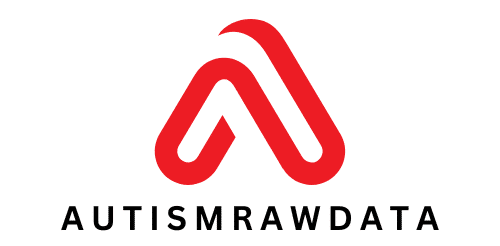As we keep pace with the rapid advancements in technology, it’s evident how it has seamlessly integrated into every sphere of our lives. The world of education is no exception. In fact, digital technology is revolutionizing the traditional methods of teaching and learning, creating a more interactive and productive environment for both students and teachers. One of the most influential innovations in this sphere has been the advent of digital notetaking tools. But how exactly is this tech transforming classroom learning? Let’s delve into this transformative journey.
Technological Innovation Enhances Learning
Before we explore the impact of digital notetaking tech, let’s understand the broader implications of technology in the education sector. The integration of digital tools in classrooms has brought about immense change. It has made the process of teaching and learning more dynamic, efficient and interactive. The use of technology is not merely confined to teaching; it has also transformed the way students grasp and absorb information.
A découvrir également : Can AI-Based Phenotyping Advance Precision Medicine in the UK?
Digital tools offer a wide array of resources that enhance student learning. From online libraries and e-books to interactive modules and virtual classrooms, these resources cater to all kinds of learners, fostering an inclusive learning environment. Moreover, these digital platforms also allow real-time feedback and communication between students and teachers, making learning a more interactive and engaging process.
The Rise of Digital Notetaking
One of the significant shifts in learning methods brought about by technology is the transition from traditional note-taking to digital notetaking. Whether it’s in high school classrooms or university lectures, students are gradually discarding pen and paper in favor of laptops, tablets, and digital pens.
Cela peut vous intéresser : What Is the Latest in Microfluidic Devices for Disease Diagnostics?
Digital notetaking involves the use of software or applications to take notes on digital devices. These tools offer various features like audio recording, text highlighting, image insertion, and cloud storage, which traditional notetaking methods can’t provide. The evolution from hand-written to digital notes is not just a trend; it represents a significant change in how students absorb and retain information.
Benefits of Digital Notetaking on Students’ Learning
Digital notetaking has several benefits that significantly enhance students’ learning experiences. Firstly, digital notes are more organized and easily accessible. Students can categorize their notes based on subjects or topics, making them easier to locate when needed. They can also easily edit or update their notes without the clutter that usually accompanies hand-written notes.
Secondly, digital notetaking supports multimedia learning. Students can integrate audio, video, and images into their notes, making them more engaging and comprehensive. They can also use features like hyperlinking to connect multiple information sources, creating a holistic learning experience.
Thirdly, digital notetaking promotes active learning. As students use digital tools to take notes, they become more engaged with the content, which in turn, enhances their comprehension and retention. Digital notetaking also allows students to learn at their own pace, as they can easily revisit their notes or recordings whenever needed.
The Role of Teachers in Promoting Digital Notetaking
Teachers play a crucial role in promoting digital notetaking in classrooms. They can integrate it into their teaching methods and encourage students to take advantage of these tools. Teachers can also use digital notetaking tools for their lesson planning and presentations, demonstrating its practicality to students.
Moreover, teachers can provide students with guidance on how to effectively use these tools. They can help students navigate through different features and teach them how to organize their notes effectively. By providing students with the necessary training and support, teachers can ensure that digital notetaking becomes an integral part of their learning process.
The Future of Classroom Learning with Digital Notetaking
Considering the numerous benefits of digital notetaking and the role it plays in enhancing students’ learning, it’s clear that this tech is here to stay. As more educational institutions adopt digital tools, the use of traditional notetaking methods will continue to decline. This transition will not only make learning more efficient and interactive, but it will also prepare students for a future that is increasingly digital.
As we move forward, it’s essential for educational institutions to invest in digital infrastructure and training to ensure that both teachers and students can effectively use these tools. With the right support and resources, digital notetaking can truly revolutionize classroom learning.
Bridging the Digital Divide in Education
As we continue to explore the benefits and potential of digital notetaking, we must also address a critical issue that exists within the realm of digital technology in education – the digital divide. The concept of the digital divide refers to the gap between those who have access to technology and the internet and those who do not. Bridging this divide is essential in ensuring that the benefits of digital notetaking and other technological tools are accessible to all students.
To address the digital divide, educational institutions must take proactive measures to ensure equal access to digital tools. This could involve providing students with laptops or tablets, setting up computer labs in schools, and ensuring stable internet connectivity. Infrastructure alone, however, is not sufficient. Institutions must also invest in professional development programs for teachers to equip them with the skills to integrate technology into their teaching methods effectively.
Moreover, understanding that not all students may have access to digital tools at home, it’s crucial to provide opportunities for students to access these resources outside of regular school hours. This could be in the form of extended library hours or after-school programs that allow students to utilize digital tools.
Providing universal access to digital tools along with the necessary training ensures that all students, irrespective of their socio-economic background, can reap the benefits of digital notetaking. By ensuring equitable access, we can create an inclusive learning environment that caters to diverse learning needs.
Conclusion: The Transformative Power of Digital Notetaking
The integration of digital notetaking in the classroom has created a new dynamic in the learning process. This technology has not only revolutionized the way students take notes but has also transformed their learning experience, making it more interactive, engaging, and efficient. With the ability to integrate multimedia elements into notes and the convenience of having organized, easily accessible notes, students are now better equipped to grasp and retain information.
Teachers serve as key facilitators in this transformation, integrating these tools into their teaching methods, and guiding students in their use. By making digital notetaking an integral part of classroom learning, teachers are preparing students for a future that is increasingly digital.
However, the transformative power of digital notetaking hinges on the ability of educational institutions to bridge the digital divide. As we usher in an era of digital transformation in education, ensuring that all students have equal access to digital tools and the necessary training becomes paramount.
As we look to the future, the possibilities of digital notetaking and its potential to enhance learning outcomes are immense. With the continued integration of technology in the classroom, we can expect an even more dynamic and interactive learning experience, setting the stage for a new era in classroom learning.






